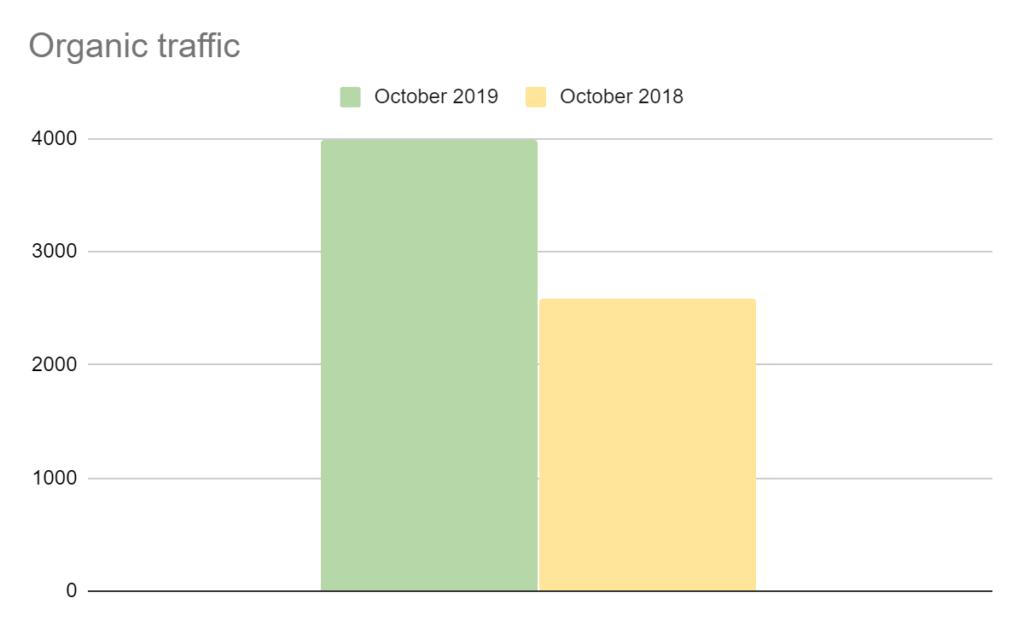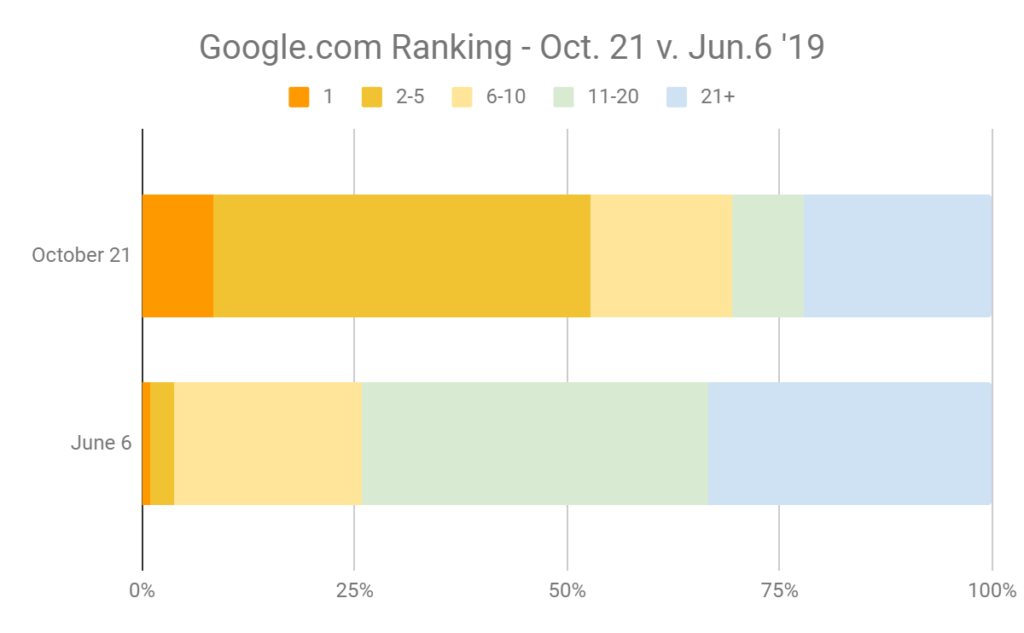The Request
Increase overall organic traffic for a 25 year old ecommerce business.
Key Takeaway
Well researched, properly cross-linked content generated around user search patterns works.
Overview
When Dayspring Pens, a 25 year old ecommerce company, came under new management, the company’s President, Daniel Whitehouse reached out to us to help improve the site’s performance. In addition to increasing conversion rate, our primary goal was to increase sitewide organic traffic.

What we accomplished
- 50%+ increase in site traffic over previous year
- Over 50% rate of google.com ranking of 1 – 5 against 0% prior to our work across a broad sample of rank tracked keywords.


How we did it
Central to our work were several key and often overlooked understandings about search, especially long tail search:
- Title tags counts roughly 100X as much as body copy
- Title tags are possibly the single most important piece of SEO content to get right
- Users look for products and services in many ways (and in their own ways)
- When making a content play, we follow the rule of thumb “be the answer to as many questions as you can.”
- Users talk about and seek information on products based on a wide range of understandings. Meet them where they are with fresh content.
- The Long tail is indeed long
- While site owners and stakeholders tend to think in terms of 1-3 top keywords, over 70% of search queries come from long tail keywords used only once or twice in the entire site history. In fact, according to John Wiley, the lead designer for Google Search, novel search queries (i.e. searches that have never been seen across Google’s entire history) 20+ year history account for ~15% of queries on Google.
- Google is worse at context and synonyms than you think
- Being explicit in your copy and using robust keyword search to inform your language selection can help search engines link your content to search queries. While Google did recently release a neural-net / Natural Language Processing engine (BERT) to better handle contextual text analysis like this, we expect good old fashioned copy to remain invaluable for the time being.
Given the above, we performed robust keyword research to better understand the range of queries being used in the product space and to identify potentially valuable niches. To get at this data we tapped into:
- Keyword research data from SEMrush, Moz.com and Google Ads
- Data mining of the site’s own Search Console and Google Analytics
- Detailed product review and conversation with the expert site owner
- XML scrapes of competitor websites
Analysis across all of these sources resulted in 37 new categories of product, which were worked into the site’s IA, as well as opportunities to augment site copy on existing categories and popular product pages.
For each new category we developed on-brand, keyword driven title tags and meta descriptions and worked with Daniel to launch the new categories and update existing ones with keyword research insights driving content creation.
Need help making a content plan for your website? Want to grow your traffic? Get in touch and let’s chat about how we can help.
